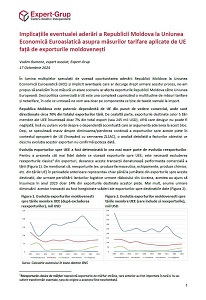

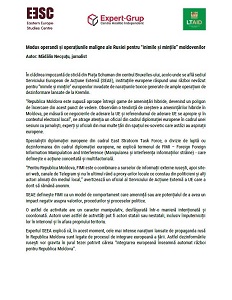
Keywords: hybrid threats; hybrid war;
In the imposing glass building on Schuman Square in the center of Brussels, where the European External Action Service (EEAS) is based, the European institutions are responding to an unseen war for the "hearts and minds" of Europeans invaded by the toxic narratives generated by large-scale operations disinformation launched from the Kremlin. "The Republic of Moldova is subject to almost the entire range of hybrid threats, becoming a testing ground from this point of view. We observe an increasing trend of hybrid threats in Moldova, as the EU accession negotiations and the EU accession referendum approach and in the local electoral context", an official from the European diplomacy draws our attention during a session with journalists, experts and officials from several countries in the ex-Soviet space that today have European aspirations.
More...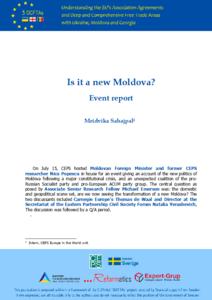
On July 15, CEPS hosted Moldovan Foreign Minister and former CEPS researcher Nicu Popescu in house for an event giving an account of the new politics of Moldova following a major constitutional crisis, and an unexpected coalition of the pro-Russian Socialist party and pro-European ACUM party group. The central question as posed by Associate Senior Research Fellow Michael Emerson was: the domestic and geopolitical scene set, are we now seeing the transformation of a new Moldova? The two discussants included Carnegie Europe’s Thomas de Waal and Director at the Secretariat of the Eastern Partnership Civil Society Forum Natalia Yerashevich. The discussion was followed by a Q/A period.
More...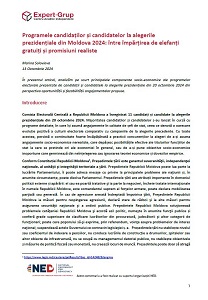
Keywords: 2024 elections in Moldova;
In this article, we briefly analyze the main socio-economic components of the electoral programs presented by the candidates for the presidential elections of October 20, 2024 from the perspective of the appropriateness and feasibility of the proposed commitments.
More...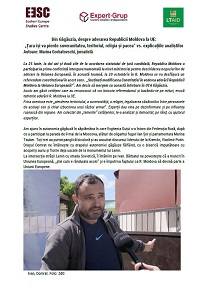
On June 25, two years and two days after the granting of candidate country status, the Republic of Moldova participated in the first intergovernmental conference at the ministerial level for the opening of accession negotiations to the European Union. This autumn, on October 20, a constitutional referendum will be held in this regard in the Republic of Moldova. "Do you support amending the Constitution with a view to the accession of the Republic of Moldova to the European Union?". We decided to go with this question in UTA Gagauzia. There I found citizens who admitted that they will boycott the referendum and based on myths, evoke the fears of the Republic of Moldova joining the EU. Their fear is "the loss of territory, sovereignty, religion, the legalization of same-sex marriages and even the outbreak of an armed war." Experts blame disinformation and Russian influence in the region. We collected from citizens' "fears", analyzed and dismantled them, one by one, with the help of experts.
More...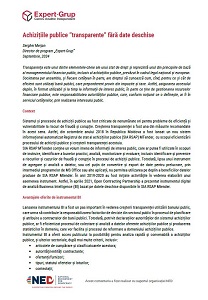
Transparency is one of the key elements of a rule of law and represents one of the basic principles of public financial management, including public procurement, provided for in the national and European legal framework. Society as a whole, and each individual citizen, has the right to know how, when, why and how efficiently public money is used, which mainly comes from taxes and fees. Thus, ensuring full access, in usable format and on time to information of public interest, in part related to the management of public financial resources, is the responsibility of public authorities, which, according to the notion that defines it, would be at the service of citizens, by achieving the interest public.
More...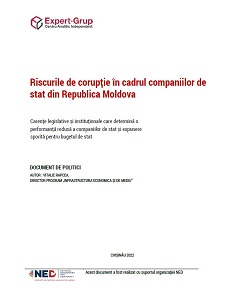
The sector of state companies, although decreasing, remains an important one for the economy of the Republic of Moldova. Thus, in the context of a very modest efficiency of state companies and the macroeconomic risks they can amplify, especially in the context of the new realities, focusing attention on state companies becomes imperative. The reduced efficiency of state companies is associated with the phenomenon of corruption within them. The document reviews the sine qua non premises for ensuring good governance of state-owned companies, analyzes the gaps detected at the legislative and institutional level, and presents concrete cases of how corruption risk factors at the state and company level harms the public interest. In this context, the document proposes that factors with the potential to generate the risk of corruption should be interpreted as obstacles to integrity that need to be removed.
More...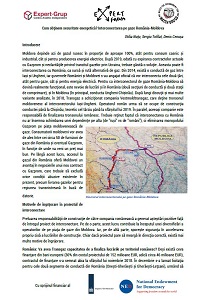
Keywords: dependency from, Russian gas;
Today, Moldova depends on Russian gas in a proportion of almost 100%, both for domestic and industrial consumption, as well as for the production of electricity. After 2019, with the current contracts with Gazprom expiring and uncertainties regarding gas transit through Ukraine, a solution must be found. This can be the interconnection with Romania, as an alternative gas source and route. Since 2014, there has been a gas pipeline between Iasi and Ungheni, and the governments of Romania and Moldova have officially committed to interconnecting the two countries, both for gas and electricity. In order for the Romania-Moldova gas interconnector to become truly functional, works are needed both in Romania (two pipeline sections and two compression stations) and in Moldova (mainly the Ungheni-Chisinau pipeline). After long discussions and several options analyzed, in 2018, Transgaz acquired the company Vestmoldtransgaz, which owns the Moldovan section of the Iasi-Ungheni interconnector. The Romanian operator was to handle the construction of the pipeline to Chisinau, theoretically by the end of 2019 at the latest. In parallel, the same company is responsible for completing the Romanian section. It should be remembered that the interconnection with Romania would not mean changing one dependence on another (on "Russians" vs. "Romanians"), but eliminating Gazprom's monopoly on the Moldovan gas market. Moldovan consumers will have a choice between the approximately 50 gas suppliers from Romania and possibly Gazprom, depending on where a better price will come from. In addition to this, access to gas from Romania gives Moldova an advantage in the negotiations of a new contract with Gazprom, which must exclude any existing abusive conditions, such as the delivery of gas for the Transnistrian region on a debt basis.
More...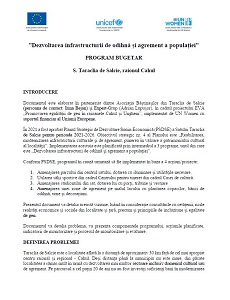
The document is developed in partnership between the Native Association of Taraclia de Salcie (contact person: Irina Bejan) and Expert-Group (Adrian Lupușor), within the EVA project "Promoting gender equality in Cahul and Ungheni districts", implemented by UN Women with the financial support of the European Union.
More...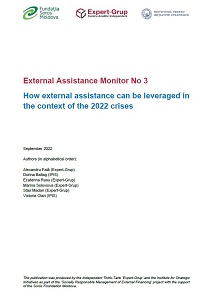
Since May 2022, the volume of external assistance received by Moldova’s public sector increased significantly compared to the first quarter of the year. According to the statistics published by the NBM, the public sector (Government, NBM, local public authorities, public corporations) received external loan disbursements of USD 25 million in the first quarter of 2022, while making repayments (USD 39 million) that exceeded the amount of new loans obtained. The state also received grants and external technical assistance worth USD 30 million in the first quarter of 2022. According to Expert-Grup estimates based on the reports released by the NBM, the Ministry of Finance and the EU Delegation to the Republic of Moldova, between April and mid-August 2022, the public sector received disbursements of external loans and grants in the total amount of about USD 327 million1. Thus, by mid-August 2022, the external public debt is estimated to have reached USD 2,855 million, which is about 20-21% of GDP, far from the critical limit of 55%.
More...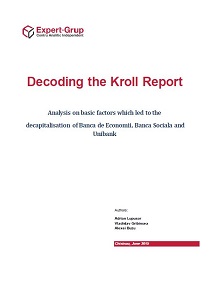
Keywords: Banking in Moldova;
This analysis has been drawn up in the context in which 3 banks of systemic importance and which constitute about 35% of the whole Moldovan banking system assets reached insolvency limit in late 20141. The Banca de Economii, Banca Sociala and Unibank (hereinafter, BEM, BS, respectively UB) have been placed under special administration of NBM at the end of November 2014, as a result of the dramatic downfall of the financial situation. Thus, the capital adequacy indicators have dropped below the minimum allowable level, and the share of nonperforming loans increased substantially (Figures 1 and 2).
More...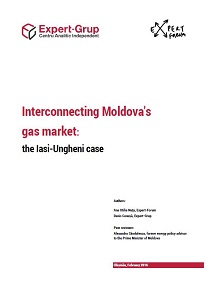
Keywords: energy-supply for Moldova;
In 2010-2013, after Moldova joined the Energy Community, the government became more committed to diversify gas supplies by interconnecting with Romania, to fully liberalize the market and to integrate in the European energy system. This supported the completion of the Iasi-Ungheni interconnector in August 2014. It cost 26.5 million EUR, of which about 80% was covered by Romania and the EU and the remaining by Moldova. The interconnector's capacity is 1.5 bcm/year, a volume that could fully cover Moldova's consumption needs (without Transnistria). However, the actual volume exported by Romania through the interconnector in 2015 was only 1 million m3, or about 1% of the country's total consumption (without Moldova's Eastern counties).
More...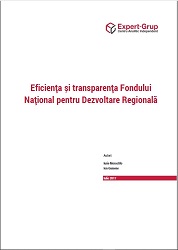
This study aims to analyze the effectiveness, efficiency and impact of investments financed from the National Fund for Regional Development. In order to clarify those aspects, it is first necessary to understand the institutional and operational framework in which the Fund operates, as well as the way in which funding is allocated. The analysis of these aspects is done in Chapters 1 and 2. Then, in Chapter 3 follows the estimation of the impact by using the ANOVA statistical method. The last aspect analyzed, but no less important, is the transparency of the use of financial means within the Fund (Chapter 4). Transparency was analyzed in a separate chapter due to the worrying situation in the management of the Fund. Finally, the report presents conclusions and a set of systemic recommendations, which are necessary from the perspective of the authors to improve the situation with the stimulation of regional development (Chapter 5).
More...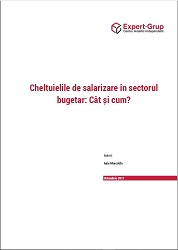
The given study complements the analyzes developed by public institutions regarding the salary system in the budget sector. The main purpose of the report is to contribute to the discourse and analysis of possible scenarios for reforming the current public sector salary system. The document begins with the analysis of the normative framework regarding wages in this field. The emphasis in the first chapter was on normative and conceptual aspects that were not found either in the Reform Concept elaborated by the Ministry of Labour, Social Protection and Family, or in the report of the Court of Accounts. In the second chapter, the costs and sustainability of personnel budget expenditures are analyzed, in order to highlight the possibilities of salary increases. In the third chapter, the efficiency of public personnel expenditure is estimated, which was achieved through a brief analysis of the link between salary growth in the budget sector and its performance. Finally, in the report a set of strategic recommendations are formulated for the new single salary concept in the budget sector, which is to be implemented in the near future.
More...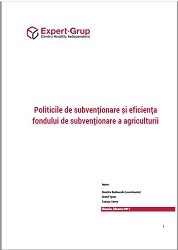
The volume of subsidies allocated to regions and beneficiaries indicates an inequitable distribution. The distribution of subsidies in a territorial profile shows a considerable difference between the districts that benefited from the highest and lowest payments. Thus, a discrepancy of 5 times (in the case of subsidies per hectare) and 7 times (in the case of subsidies per person) is attested. Such a discrepancy cannot be explained by the imprecision of the indicators used. Therefore there are some problems in the eligibility criteria and/or support measures, which do not provide fair access to the subsidy fund for all regions. This situation needs to be examined in more detail to rule out these discrepancies in the future.
More...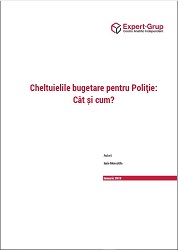
The purpose of this study is to cover the analytical gap regarding the real volume of expenditures for the Police.2 In order to calculate what is the real volume of budget expenditures intended for the Police, the study begins with the definition of its institutional limits within the Ministry of Internal Affairs. The delimitation and definition of the institutional limits of the Police are important considering that the Police is only one of the components of the Ministry (Chapter 1). Already based on the institutional delimitation, an analysis will be made of the evolution of expenses for the Police, the number of police officers, but also their density per 100 thousand inhabitants. Also, the amount of funding and replenishment of the Police is analyzed in comparison with other countries in the region (Chapter 2). Next is the analysis of the impact of budget expenditures on the improvement of public security and public order services, focusing on the evolution of crime rates (Chapter 3). Finally, the report comes with a summary and a set of strategic recommendations.
More...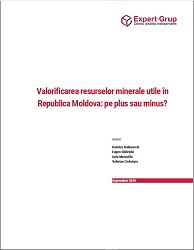
This report comes to take the first step in evaluating and promoting transparency in the extractive sector in the Republic of Moldova. The methodologies used in IETI and the Natural Resources Charter were chosen as a methodological benchmark for the evaluation of transparency. The evaluation of the level of transparency is based on a series of questions that allow covering all the important aspects related to the entire cycle of processes in the analyzed field. At the same time, we must take into account the fact that these instruments were developed for countries that have massive reserves of mineral resources and, consequently, have an important role in the development of the extractive industry. Since the role of the extractive industry in the Republic of Moldova is quite modest in scope and structure, these methodologies have been adjusted to local conditions. Therefore, only a set of questions relevant to the Republic of Moldova was chosen. The quantification of the level of transparency was carried out based on a grid, which reflects a level of transparency, according to the following qualifications: (i) unsatisfactory, (ii) satisfactory and (iii) good.
More...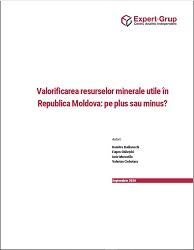
Keywords: mineral resources of Moldova;
The Republic of Moldova is a country with few underground resources, at least at the current level of research. Consequently, the Republic of Moldova does not have an extractive sector with an important weight in the structure of the economy. At the same time, without this sector it would be difficult to cover the needs of supplying the population and businesses with housing, buildings and other infrastructure elements. On the other hand, if we take into account the fact that for the Republic of Moldova the soil and climate traditionally represent the fundamental resources for livelihood and economy, then the way in which the exploitation of useful mineral resources is carried out is very important. The object of this analysis is only the widespread useful mineral resources (sand, clay, building stone, clayey sand and sandy clay, etc.). Respectively, oil, natural gas, solid fuels were not included in this study.
More...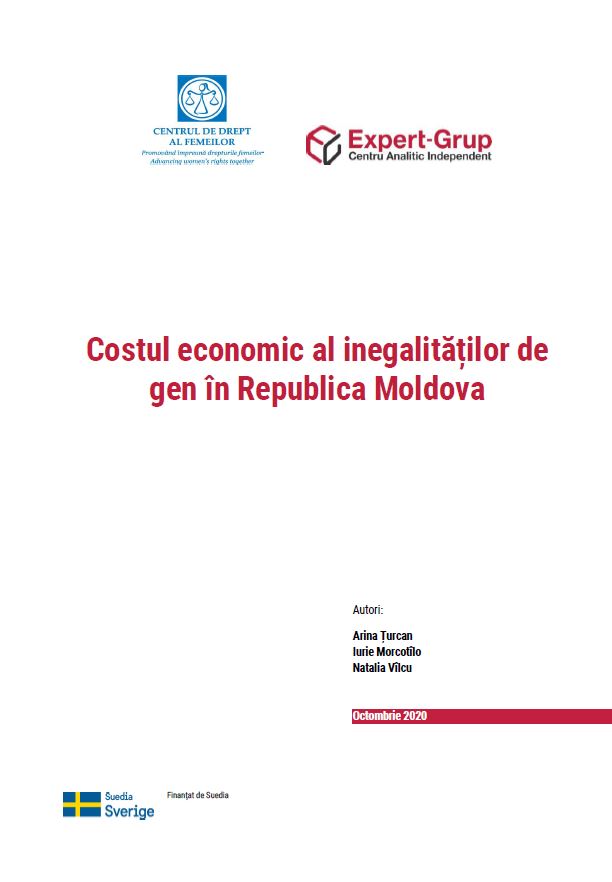
The purpose of this report is to estimate the economic costs caused by gender inequalities in the Republic of Moldova and to identify a set of strategic recommendations. The report will estimate the latest developments related to gender inequities in the Republic of Moldova, especially through the lens of changes in demographic statistics and the labor market. Based on these developments, the economic costs of gender inequities are calculated, taking into account the methodological approaches already applied at the international level. One of the public policies that would reduce gender inequalities is the development of the institutional and legal framework related to the reconciliation of family life and professional obligations. Good international practices and the specifics of the Republic of Moldova are analyzed along the way to identify potential areas of intervention by public authorities. A separate emphasis is placed on the analysis of pre-school education and the potential costs of its expansion in the Republic of Moldova, with the aim of identifying to what extent the implementation of this public policy is feasible. Finally, the report formulates a set of recommendations that would lead to the reduction of gender inequalities and the economic costs generated by them.
More...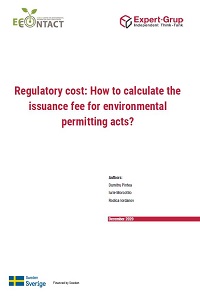
This study aims to evaluate the way of establishing the issuance fees for environmental permits, including the permitting acts stipulated in the Nomenclature annexed to the Law no. 160/2011. The aim is to identify and describe a rational mechanism for setting fees based on provisions of the current regulatory framework and the government's commitments in this respect. As a result of this analytical exercise, a series of proposals and recommendations were formulated in the study, which, when used in a systemic way, can justify the application of a reasonable level of such fees, from the perspective of covering both the effort made by authorities and the compliance costs for beneficiaries. Also, the proposed mechanism can be extended to all environmental permits, taking into account that the issuance process of any such permit is based on the provision of a public service delivered by a state authority
More...